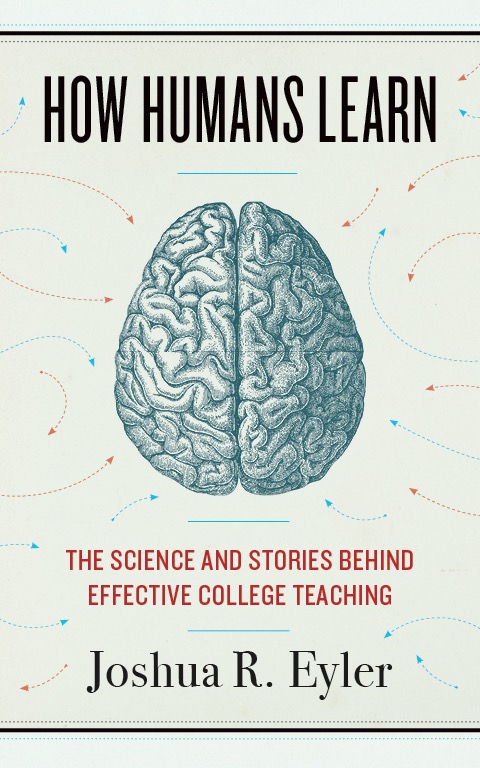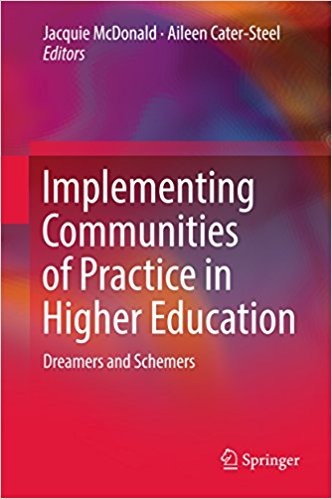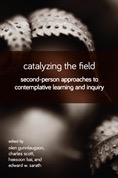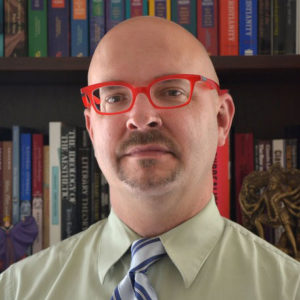collaborative learning
Select an item by clicking its checkbox
What do artificial intelligence, machine learning, robotics, and other new media arts have to teach us about the teaching and learning of religious worldviews, imagination, and symbols? To find this out, a small group of scholars in religion and theology, funded by a Wabash Center Grant, visited the Massachusetts Institute ...
Date Reviewed: December 10, 2019
This edited volume profiles higher education communities of practice, with contributing authors reflecting on their experiences of dreaming, scheming, and implementing communities of practice (CoP) within a variety of higher education contexts. As an elementary teacher turned practical theologian, I am encouraged to see this attentiveness to social learning within higher education. The CoP concept has significant potential for critiquing, enhancing, and transforming teaching and learning practices within religious and theological educational contexts.
It is noteworthy that, despite the current climate in higher education being identified as chilly and non-supportive of collaborative activities (xii), the enthusiastic response to Jacquie McDonald’s call for papers exploring the use of CoP for learning and teaching in higher education resulted in two volumes. A more practical focus is evident within this second volume.
The Foreword, written by Etienne and Beverley Wenger-Trayner, provides a helpful overview of the history of the CoP concept. CoP theory is identified as having moved through three phases, from the community defining learning, to learning defining the community, to the consideration of a broader landscape of practice, acknowledging learning taking place at the boundaries between communities of practice as well as within them (viii). Theological educators will benefit from considering the relevance of each of these phases.
The volume is divided into four parts. Part I consists of case studies. Amongst these first seven chapters, the more generalizable are certainly relevant to teachers of religion and theology. These include the first chapter, with its focus on the use of CoP to support the capacity development of supervisors of HDR students, and the fourth chapter, with its focus on the practice of generous scholarship and collegiality through academic writing retreats. Here Sally Stewart Knowles advocates for attentiveness to the actual practices and processes that lead to publication. Noting the proven value of writing retreats, Knowles implies that the communities fostered by such retreats must move from fringe status to becoming an integral part of a research environment (78). The sixth chapter, with its focus on collaborative autoethnography and decoloniality, may also prove invaluable in terms of researcher preparation in various contexts.
Part II focuses on curriculum development. Here theological educators may particularly resonate with an emphasis on “transformational approaches to professional learning” (161) within chapter eight and the interdisciplinary focus on transformative education and sustainability within chapter thirteen.
Theological educators and students will benefit from considering the various student-focused CoP within Part III. Doctoral students may particularly engage with the development of informal organic networks outlined in chapter fourteen. Variations on the Equity Buddies concept outlined in chapter seventeen may be valuable for supporting first-year students within theological colleges.
Finally, the focus within Part IV on virtual CoP will be of relevance to those engaging students in quality learning experiences through online teaching, learning, and research. Themes that emerge through these chapters include the organic nature of communities and the fostering of a culture of collaboration.
Given that some contributors make extensive use of acronyms, readers unfamiliar with these acronyms may need to engage in the discipline of slow reading. While a final summary chapter reviewing and discussing key themes and findings that emerged throughout these papers would enrich this work, educators will nevertheless benefit from focusing on those chapters most relevant to their contexts. Overall, religious and theological education readers are likely to glean inspiration, ideas, and implementation strategies that contribute to learning with and from one another in today’s isolating yet interconnected world.
Date Reviewed: June 17, 2021
Catalyzing the Field presents a diverse series of applied case studies about the second-person dimension of contemplative learning in higher education. As a companion volume to the editors’ previous book, The Intersubjective Turn, the contributors to this book explore various pedagogical scenarios in which intentional forms of practice create ...
Catalyzing the Field presents a diverse series of applied case studies about the second-person dimension of contemplative learning in higher education. As a companion volume to the editors’ previous book, The Intersubjective Turn, the contributors to this book explore various pedagogical scenarios in which intentional forms of practice create and guide consciousness. Their essays demonstrate that practice is not only intellectual, but somatic, phenomenological, emotional, and spiritual as well. Along with their first book, Contemplative Learning and Inquiry across Disciplines, the editors craft an essential body of work that affirms the fundamental importance of contemplative practice in institutions of higher learning. (From the Publisher)

How Humans Learn: The Science and Stories behind Effective College Teaching
Date Reviewed: January 18, 2019
How Humans Learn argues that our natural systems for learning are connected to human evolution and psychological development, and a better understanding of the way humans learn can help determine what will and will not work in the classroom. Instead of presenting evidence of why a teaching or learning strategy works, Eyler identifies five patterns of learning drawn from psychology, evolutionary biology, and neuroscience to explain why students learn more when certain techniques are chosen over others: curiosity, sociality, emotion, authenticity, and failure. He draws on seminal works in the scholarship of teaching and learning such as that of Bain (What the Best College Teachers Do, 2004) and Fink (Creating Significant Learning Experiences, 2013), and his patterns overlap with principles of learning identified by other scholars (Ambrose et al., How Learning Works, 2010; Davis & Arend, Facilitating Seven Ways of Learning, 2013).
In each chapter Eyler offers examples of classroom practice from various disciplines in Western higher education and provides helpful “key takeaways” that summarize major points and highlight practical suggestions. For example, to stimulate curiosity we can incorporate inquiry, discussion-based pedagogies, and backward design that structures courses from the outset so that every element is tied to an essential question that our course helps students answer (Wiggins & McTighe, Understanding by Design, 2005). To promote sociality, we can use collaborative learning strategies, peer instruction, storytelling, and role-immersion games such as Reacting to the Past. To ensure that emotions guide thinking rather than undermine it, we can demonstrate the relevance of the material and embody “pedagogical caring” by giving frequent feedback, having high expectations for students, and coming to class prepared. To encourage an authentic learning experience, we can allow students to engage in applied problem solving, incorporate experiential and service learning, and bring our own research into the classroom. Finally, we can allow students opportunities to fail when the stakes are low, then give them support and guidance to understand from failure and cultivate growth mindsets, grit, agency, and other resiliency strategies.
Those fascinated by evolutionary developmental biology will likely enjoy the entire book, while others may gravitate towards particular chapters that address topics of interest. Eyler mentions religion only once in the book, during discussion of the “emotional trauma” that can result when students alter knowledge structures or “mental models” tied to their personal beliefs and deeply held convictions (192), but his discussion of “cognitive realism” – when the brain registers a situation as being realistic – also poses interesting challenges for instructors of religion (154). Theological education affords various types of immersive experiences for students, but what sorts of “authentic activities” and “immersions” might instructors of religious studies offer students, especially those who teach in public colleges and universities? Although there are clearly opportunities to apply tools and methodologies from the study of religion to conduct field research or wrestle with problems of the world (155), what characteristics would make other assignments or activities “compellingly” real (157) without being religious?
Over the past several years, there have been any number of events that have prompted professors to abandon their syllabi and lesson plans and create space for addressing events unfolding outside the walls of the classroom. This in-breaking of the contemporary, this pressure of the immediate, is often traumatic in ...



